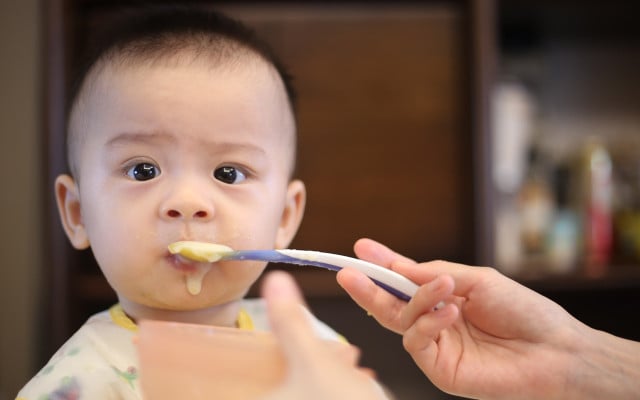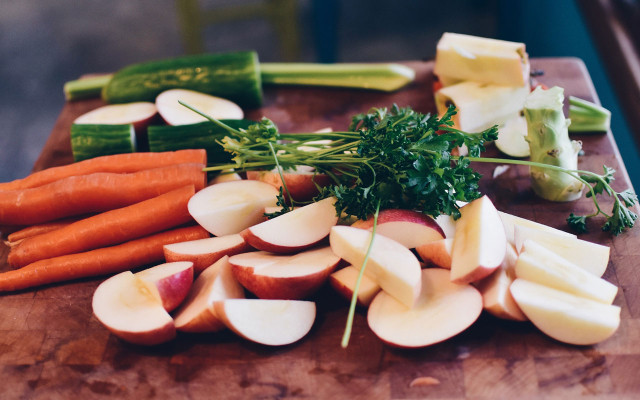Children completely change their parents’ lives. Even before the baby arrives, parents are faced with lots of new choices: Are cloth diapers better? What do we need to consider when it comes to baby clothes? Where do we find better toys? We gathered tips from a mother of two who knows her way around an eco-kid’s room.
Don’t Fuss over your Baby’s Skin
Less is more, and that is doubly true when it comes to baby skin care, says Tabea Börner. The 30-year-old has long made sustainable and environmentally friendly lifestyle choices and continued to do so once her two small children were born. She advises reducing children’s personal hygiene to the basics: Olive, almond or coconut oils are enough to keep tender baby skin soft and healthy. “No baby needs perfumed lotions packaged in plastic.”

She also has an alternative for plastic-wrapped wet wipes: She made her own wet wipes from cloth remnants, old bedsheets, and hand-me-down towels. Dipped in coconut oil, they gently clean baby’s butt – and are upcycled at the same time. One further point in their favor: These homemade wipes are washable and therefore reusable, saving both trees and landfill space.
Baby Food: DIY Seasonal Eating Saves Money
“Breastfeeding is of course a no-waste process,” says Tabea. But as a child moves to solid foods, many people add in supermarket baby food in jars. It is, however, absolutely easy and inexpensive to create your own baby food from fresh, unseasoned, seasonal vegetables. “It’s best to lightly steam rather than boil, to retain more of the vitamins and nutrients,” she recommends.
Puree larger batches, then freeze it into smaller serving sizes with the help of an ice cube tray. Thawing as needed results in less food waste each meal time.



Zero Waste Baby Food: Reuse Vegetable Scraps
Have some leftover vegetable parts and peelings on your cutting board? There are a lot of great ways to whip up some fresh baby food the same as above – so put them back to use! Have a read of our own guide on how to reuse vegetable scraps for some creative and sustainable culinary inspiration. Whether wilted greens and leftover peelings – you can reuse vegetable scraps a lot more easily than you’d think.
For example, you could use vegetable scraps such as cauliflower stalks and leaves, broccoli or cabbage stalks to make a simple and easy mash or smoothie. Portion and freeze for the little guy or girl for later and you’re done. These make for a great organic, vitamin-rich snack and are sure to be healthier than store-bought baby food alternatives.



However often it may happen when you’re busy caring for a baby, don’t let yourself forget: You need to eat, too. Why not take your leftover vegetable scraps and give a homemade pesto a try?
Baby Clothes: Creative Upcycling
It’s cold outside, yet we sweat indoors – and it’s not only adults that have this problem. So what should our kids wear? For baby clothes, Tabea is a proponent of the natural properties of virgin wool. It dries quickly, is breathable, and allows for easy stain removal.
“In summer it’s cooling, and in winter it’s warming. It’s the perfect material!” Tabea has begun collecting secondhand virgin wool clothing of all sizes and modifies it into children’s wear. Natural textiles like organic hemp or cotton are also gentle on sensitive baby skin.
Cloth diapers instead of disposable ones
With conventional single-use diapers, during the first few years of baby’s life you will create a veritable mountain of plastic waste. Sure, it’s not for everyone (or every butt), but why not give cloth diapers a try? They’re not nearly as complicated or unpleasant as you may think: These days you will find a huge variety of different systems, designs and manufacturers to choose from.



Washable cloth diapers last for years and create zero waste. Tabea recommends you own at least 20 diapers to avoid having to wash them every day.
Baby Clothes: Secondhand Is the Best Choice
Upcycling and secondhand purchasing or trading is the best option for baby clothing, since the price of high quality items can really start to add up when purchased new. These items can easily be passed down to younger children in the same family or to others in your circle of friends or acquaintances when no longer needed.
Check your area for secondhand stores such as Goodwill or Salvation Army, visit some garage sales or even have a peek at your neighborhood’s local listings for family-to-family donations.
Read on:
- Water Conservation: 10 Tips for Saving Water at Home
- Salt Dough Ornaments Recipe: A Fun Family Project for Kids of All Ages
- Unclog Your Drain Without Harmful Chemicals
This article was translated to English. You can view the original here: Zero-Waste-Familie: 6 einfache Tipps fürs Baby
** Links to retailers marked with ** or underlined orange are partially partner links: If you buy here, you actively support Utopia.org, because we will receive a small part of the sales proceeds. More info.Do you like this post?






